Will Huge Data Centers Boost Wisconsin’s Tax Revenues?
Critics say special sales tax exemption will give big tech companies millions.
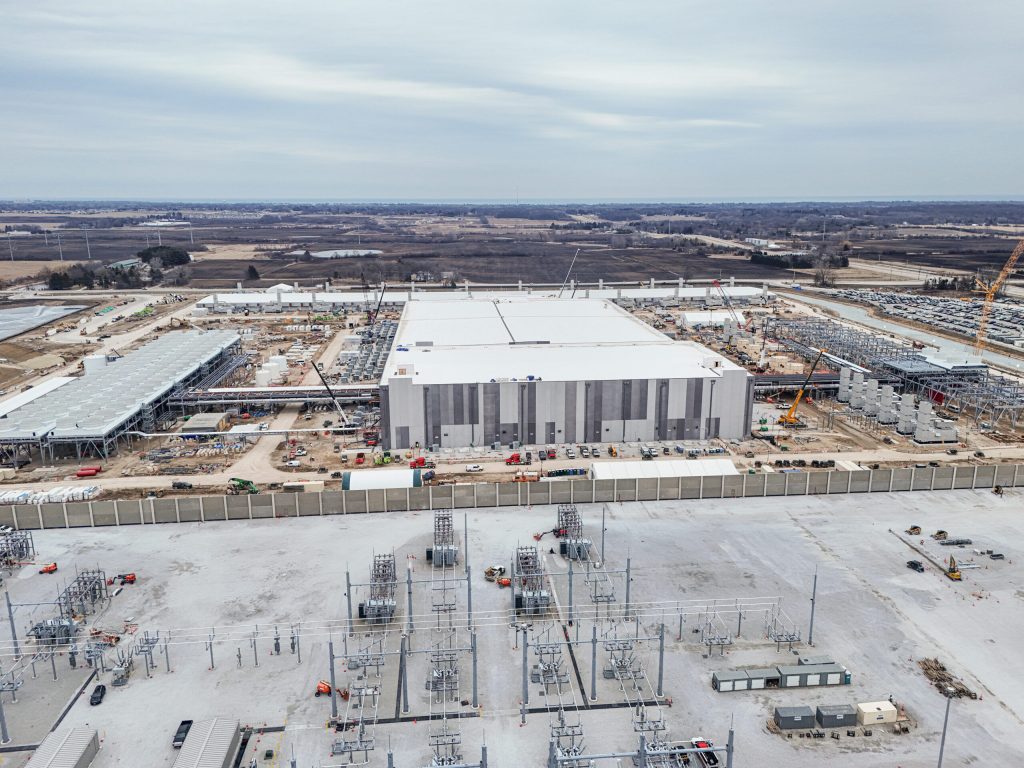
Construction is ongoing on the first phase of Microsoft’s data center project in Mount Pleasant on March 11, 2025. Photo courtesy of Microsoft
WPR reporters are diving into the development of data centers around Wisconsin and the impacts they could have on the communities where they’re being built and the state as a whole. This story is part three in a four-part series.
Two decades ago, the city of Port Washington was home to manufacturers whose operations provided plenty of well-paying, blue-collar jobs. Its property tax burden was balanced between businesses and residents.
“Our internal infrastructure is hard to maintain because there’s nobody there during the week to go out to lunch or shopping or support the things that we love,” Neitzke said.
That economic transition has also shifted more of the city’s tax burden on to residents, Neitzke said. To reverse that trend, he said city leaders realized they needed to attract economic development.
We Energies, the city’s electric utility, connected Port Washington officials with Cloverleaf Infrastructure, a Texas-based company that sites data centers. Those talks led Cloverleaf to pursue a data center campus on roughly 1,900-acres. The company that will be the site’s “end user” has not yet been announced.
One data center could add between $1.3 and $1.8 billion in property value to the city, which currently has a total valuation of just over $1 billion, Neitzke said. He said a data center could “double the valuation” of the city, boosting the city’s tax revenue to improve local services while also providing relief to local taxpayers.
“That could potentially cut personal property taxes in half,” Neitzke said “Our city would be able to be in a really, really strong position for our schools, our kids, our seniors, everything and everybody.”
The planned development in Port Washington is one of several data center projects being pursued across the state. Microsoft is building a data center campus in Mount Pleasant on land initially meant for Foxconn, and has additional plans for a data center in Kenosha. And a developer using an alias is pursuing a data center project in Beaver Dam.
State and local officials largely view data centers as an opportunity to increase their tax base through billions of dollars in private investment, while critics argue the big tech companies behind those projects are set to receive millions in handouts from taxpayers.
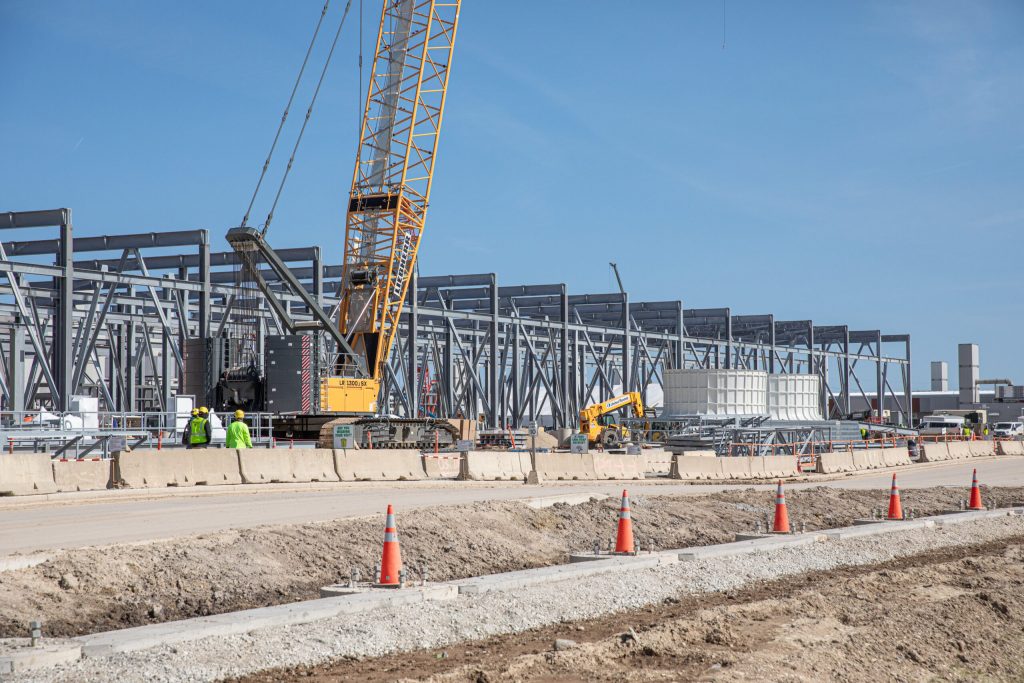
Construction is ongoing on the first phase of Microsoft’s data center project in Mount Pleasant on March 11, 2025. Photo courtesy of Microsoft
Data center tax breaks signed into law in the last state budget
In the last two-year state budget, passed in the state Legislature and signed into law by Gov. Tony Evers, Wisconsin established a sales and use tax exemption for data centers.
To qualify for the exemption, the Wisconsin Economic Development Corp. must certify that a developer plans to build a data center or data center campus, according to a fact sheet from the state Department of Revenue.
It also requires developers to make a minimum level of investment over five years. The level of investment is based on the host county’s population. The capital investment threshold ranges from requiring $150 million in a county with a population over 100,000 to $50 million in a county with a population below 50,000.
Some of the things exempt from sales and use taxes include computer server equipment, fiber-optic cabling, substations, electricity, cooling systems and mechanical equipment.
If a developer doesn’t hit their required investment target, WEDC can essentially revoke the exemption and charge the developer a financial penalty roughly equal to the amount of unpaid tax over the five years.
In February, WEDC entered into a contract with a data center developer using an alias that would exempt the developer from paying sales tax on purchases supporting the project.
The project is expected to include $100 million in capital investment and roughly $837 million in total leveraged investment to build a data center project on around 800 acres of land in Beaver Dam, according to the agreement.
The state’s agreement is with a developer using the alias of Degas LLC. In April, Bloomberg reported that Meta, the company that owns Facebook and Instagram, was the firm behind Degas.
In addition to the developer in Beaver Dam, Microsoft and a subsidiary of Verona-based health care software company Epic Systems have been certified by the state for the tax exemption, according to the Department of Revenue.
A spokesperson for Microsoft said in a statement that the company supported Wisconsin’s sales and use tax exemption back in 2023. The spokesperson said the incentive makes the state more competitive with other states trying to attract data centers.
Brian Janous, co-founder of Cloverleaf Infrastructure, the developer pursuing a project in Port Washington, said his company likely won’t seek the certification. He said the company is in talks to sell the project “to a large scale data center owner operator by the end of May.”
That’s the firm that would ultimately seek the sales and use tax exemption, Janous said. He said Cloverleaf plans to announce the end user sometime this summer. He framed the tax exemption as a tool that allows Wisconsin to compete with other states for data centers.
“It is certainly an expectation, I think, in the industry at this point that [a] sales and use tax exemption be in place to make considerable investment in data centers in that state,” he said. “I don’t think there’s a state right now that has substantial data center investment that does not have a sales and use tax exemption.”
‘The company can access this tax exemption forever’
Kasia Tarczynska, senior research analyst at Good Jobs First, a national nonprofit that tracks subsidies, said sales and use tax exemptions are the most common form of state subsidies used to attract data centers. But she says the lack of a sunset provision in Wisconsin’s tax exemption is problematic.
For example, Microsoft, a company with a net worth of over $2 trillion, will never pay sales tax on purchases for its data centers as long as it’s in Wisconsin, she said.
“The company can access this tax exemption forever — there’s no end date by which this tax exemption expires for a single company,” she said. “Because there is no limit of how much companies can benefit from these tax breaks or for how long, these programs can become very expensive very fast.”
Good Jobs First found that 15 data center sales and use exemption programs across the country “drained a small number of communities of almost $1.5 billion” in revenue in 2023.
Twelve states either had a sunset or a date at which a state no longer issues certificates to data centers, according to the table.
Based on capital expenses for a typical data center project, the state Department of Revenue estimates the exemption will provide a $8.5 million sales tax decrease during initial construction with an ongoing sales tax deduction of $735,000. If a data center replaces IT equipment on a five-year cycle, the department estimates they would receive an additional $1.6 million annualized sales tax decrease when equipment replacement begins.
But Missy Hughes, secretary and CEO of WEDC, said the lack of a sunset in Wisconsin’s sales tax exemption incentivizes “companies to keep investing in those data centers.”
“These projects are going to be built somewhere, and if they bring value to a community that would otherwise not have that value, then there’s an opportunity to bring revenue into the community,” she said. “Without the sales tax exemption, maybe that investment wouldn’t have happened, and you would never have the revenue in the first place.”
Some state lawmakers are working on a bill that would expand what data centers qualify for the incentive and prohibit cryptocurrency mines from accessing the tax exemption. But the bill does not create any sort of time limit on the exemption.
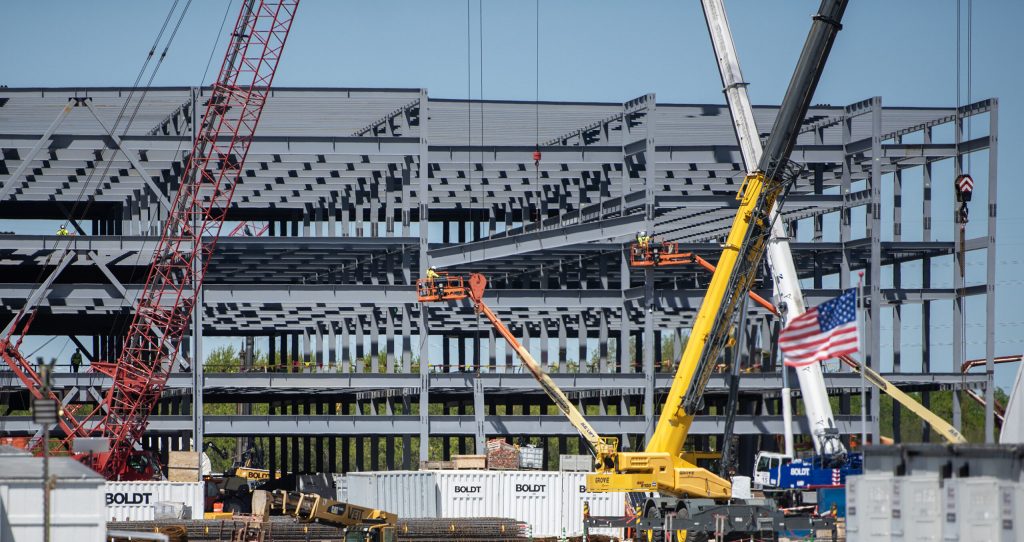
An artificial intelligence data center is built on land once slated for development by Foxconn in Mount Pleasant on Wednesday, May 8, 2024, in Mount Pleasant, Wis. Angela Major/WPR
Local incentives the same as tools used for most other development
At the local level, the tools available to support data center developments are largely the same as those used for other development.
Tax incremental financing is the primary subsidy that municipalities use to support development. A municipality must designate a geographic area as the tax increment district, where new taxes generated through increased property value are used to pay off infrastructure costs in that district often funded through municipal debt.
“Instead of going to the general budget, those new taxes go to paying bonds that are used to basically build projects for a company,” Tarczynska said.
According to the city’s development agreement, Beaver Dam plans to use municipal bonds for around $10 million of public infrastructure improvements. The city also plans to bond for up to $100 million in development costs. Those bonds would be repaid by the property tax revenues generated from the project.
The Beaver Dam Area Development Corp., which has worked with the city on the development, declined to comment for this story, but provided a February project update.
“It is important to note that this tremendous financial impact would be realized without the need for any city borrowing,” the update reads. “All project investment would be supported by the company’s own newly created taxable value.”
But Tarczynska said she had transparency concerns around the project. She said the local development agreement is “very troubling” because the district was created for an “unknown company,” reportedly Meta.
“The name of this company wasn’t disclosed to the public, so nobody knows who is behind this deal,” she said. “It might be a speculative project. It might be one of the large tech companies benefiting from the secretive subsidies.”
TIF districts can be risky if a development falls short of expectations, according to the League of Wisconsin Municipalities. Taxpayers could be left paying the bill for infrastructure improvements if revenues from the project don’t materialize.
Microsoft is building a data center in a tax increment district created to support Foxconn’s failed development, which has yielded a small fraction of the more than 10,000 jobs that were once promised.

An artificial intelligence data center is built on land once slated for development by Foxconn in Mount Pleasant on Wednesday, May 8, 2024, in Mount Pleasant, Wis. Angela Major/WPR
In that case, Microsoft is building on a site where local governments had already bonded for the public infrastructure. Under Microsoft’s agreement with Mount Pleasant and Racine County, the company agreed to build no fewer than four buildings and must seek permits for the last of those four by 2044.
The village agreed to make annual “incentive payments” to Microsoft that are around 42 percent of the revenue generated by the project’s first phase, but those payments cannot exceed $5 million and rely on the village receiving increased revenue after 2028, according to the agreement.
Microsoft also agreed to generate $1.4 billion in property value by the start of 2028. If it cannot generate that value, it agreed to pay the village either $15 million or the difference between the actual value and $1.4 billion, whichever is lower.
Mount Pleasant officials declined to comment on the agreement, saying officials spoke publicly about it when it was approved by the village board.
In a statement, the Microsoft spokesperson said having the industrial site shovel-ready allowed the company to “move quickly, which was attractive.” The spokesperson did not comment specifically on the incentive payments it’s slated to receive, but said the company is on pace to invest $3.3 billion in Mount Pleasant by the end of 2026.
“Microsoft’s datacenter investment in Wisconsin is one of the largest in the world,” the spokesperson stated. “This makes our relationship with the community and the state especially important.”
In Port Washington, Neitzke said officials haven’t yet had in-depth conversations about possible financial incentives for the project.
“When we make financial decisions, I really struggle with long-term commitments that put another generation in charge of decisions we made,” he said. “If we do put in a TIF, my vision would be that it would be for a short period of time, not a long period of time.”
State taxpayers have spent $50M to support Foxconn. Has Wisconsin learned anything?
Long before Microsoft had plans in Mount Pleasant, Foxconn shared visions of an electronics manufacturing plant that would create 13,000 jobs. To support that plan, then-Gov. Scott Walker entered the state into a $3 billion incentive agreement with the Taiwanese company.
That agreement was scaled back by the Evers administration after Foxconn acknowledged it wouldn’t move forward with its original plans. It offers up to $80 million in state tax credits in exchange for nearly 1,500 jobs and $672 million in investment.
So far, Wisconsin taxpayers have dolled out more than $50 million to Foxconn. But the state tax credits used for Foxconn are different than the type of incentive Microsoft and other data centers are receiving.
The income tax credits provide an incentive to a company to invest and create jobs in Wisconsin and are not attached to a specific type of development, but they’re mainly used to support manufacturing, said WEDC’s Hughes. The sales tax exemption, on the other hand, is specifically for data centers.
“They’re both incentives, but they’re slightly different in how they’re applied and what the ultimate goal is,” Hughes said. “One is to have a data center built, and the other is for a much broader type of investment in manufacturing, or other job creation and infrastructure.”
Hughes also said WEDC is not currently in talks with data center developers about potential development deals that include tax credits. She said the agency’s talks with companies have been limited to the sales tax exemption.
While the mechanisms are different, critics argue both subsidies leave taxpayers on the hook for millions of dollars — just from a different tax.
“All of these deals have the same kind of component, which is lowering the tax obligation of these big companies,” Tarczynska said.
Former state Rep. Gordon Hintz, a Democrat from Oshkosh who voted against the $3 billion Foxconn deal in 2017, said Microsoft’s development in Mount Pleasant reflects a shift in the intent of that site, from job creation to tax base growth.
“The original impetus behind the Foxconn plan was about 10,000 permanent jobs,” Hintz said. “We’ve moved away from what the original intent behind the development was but the village is being made whole because the tax base growth is still there.”

Microsoft President Brad Smith announces a $3.3 billion investment to build an artificial intelligence data center on land once slated for development by Foxconn on Wednesday, May 8, 2024, at Gateway Technical College in Sturtevant, Wis. Angela Major/WPR
Data centers are receiving incentives, but don’t create many permanent jobs
Data centers typically create more than 1,000 good-paying construction jobs while they’re being built. But they rarely need more than 100 or 200 people once they’re up and running, according to the Wall Street Journal.
In many cases, Tarcznska said subsidies are pitched to taxpayers as helping bring companies with household names to their states.
“It’s always great for an elected official to announce that they brought Amazon, or they brought Google, or they brought Apple or Meta to their state,” she said. “But a lot of state sales and use tax exemptions, or state-level subsidies, for data centers do not require any job creation.”
According to data from Tax Analysts, 16 of 32 states offering data center subsidies had job creation requirements, ranging from 20 jobs to more than 100 jobs
Wisconsin’s data center sales tax exemption is tied to investment not job creation.
In the case of Microsoft’s project in Mount Pleasant, Hughes said WEDC anticipates it will have “more ongoing jobs than you would see in a typical data center.” That’s because it will be continuously upgrading technology, she said, requiring ongoing labor from electricians and engineers.
“The data centers do provide a challenge in that it’s a lot of construction, a lot of opportunity up front, and then it kind of goes into a status quo mode,” Hughes said.
A spokesperson for Microsoft said the company expects to hire around 500 full-time employees and contractors for the first data center by the end of 2026.
But Tarczynska said often the only way to get information on how many people work at a given data center is from the companies themselves, which aren’t always interested in sharing.
“State and local governments do not track how many permanent jobs are actually created at these facilities,” she said. “We do not know how much these workers are actually paid, or where they come from.”
As state and local leaders continue to think about data centers in the coming years, Tarczynska said she believes they should consider adding job creation requirements, adding a sunset provision to the existing sales tax exemption and capping the amount spent on data center subsidies on an annual basis.
“This is a very booming industry — it has been growing by itself naturally, especially after the AI deployment,” she said. “It’s dominated by big tech companies that are quite wealthy. These are companies that, for sure, can pay the taxes.”
Local leaders see data centers as revenue boon, but critics say subsidy programs undermine those efforts was originally published by Wisconsin Public Radio.
If you think stories like this are important, become a member of Urban Milwaukee and help support real, independent journalism. Plus you get some cool added benefits.
The Impact of Data Centers
-
An Iowa City With Five Microsoft Data Center Complexes Reveals What Wisconsin Can Expect
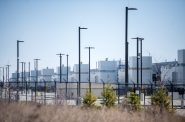 May 15th, 2025 by Evan Casey
May 15th, 2025 by Evan Casey
-
Will Power-Hungry Data Centers Increase Pollution in Wisconsin?
 May 13th, 2025 by Danielle Kaeding
May 13th, 2025 by Danielle Kaeding
-
What Are Data Centers? How Will They Change Wisconsin?
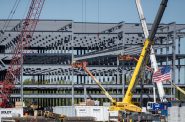 May 12th, 2025 by Nick Rommel
May 12th, 2025 by Nick Rommel


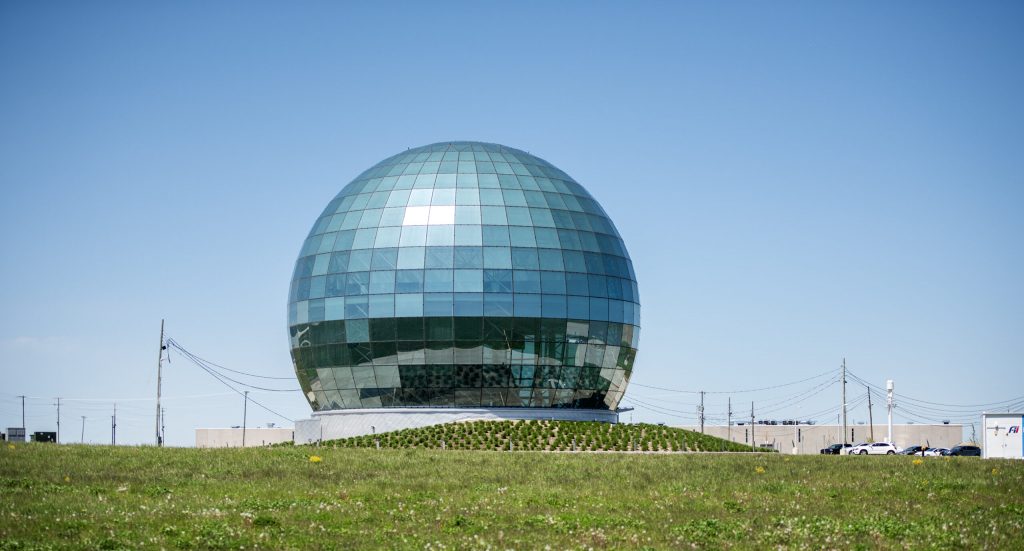




















So we need to offer tax incentives to attract data centers because they’ll add to municipal commercial tax revenue? Where is the benefit in any of this?
At least with stadiums and other boondoggles the public is getting SOMETHING. These data centers are scabs in our communities.